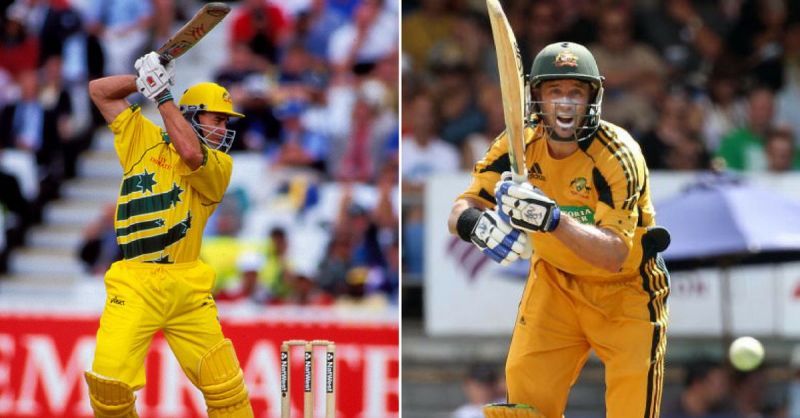
Player Comparisons: Michael Bevan vs. Michael Hussey
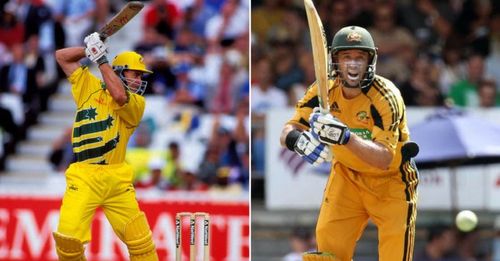
Being an Australian cricket fan was a great thing to be in the 90s. They had reliable world class batsmen like Mark Waugh, Mark Taylor, Steve Waugh, Ricky Pointing, Adam Gilchrist and Mathew Hayden lining up to devour the opponents. So, as a fan, you had enough reasons to expect a win whenever they took the field.
It would seem as though there was no respite for the opposition bowlers whenever Australia batted. If dismissing their opening batsmen cheaply brought them joy, realising it was Ricky Ponting walking in next would erase it.
And if by chance all the batsmen failed, you had Michael Bevan.
Bevan was almost a natural phenomenon. He would come in, first soak in all the pressure and then he would slowly direct it back to the opposition.
His ability to read the situations and the skill of manufacturing runs in the middle overs was truly masterful.
In addition to his batting, Bevan was very handy with his left-arm Chinaman bowling. He was particularly effective in ODIs, where he operated in the middle overs to give some control to his captain.
While Bevan’s career was nearing its end, there was another young left-hander from Western Australia who was still finding his feet in international Cricket.
But by the time Bevan retired in 2007 that young lad had already been labeled as Australia’s future. His name was Michael Hussey.
The southpaw had earned his place by scoring heaps of runs in the Sheffield Shield and in County Cricket in England.
Hussey, like Bevan, was a middle order batsman and had built the reputation of being a finisher in the domestic circuit. He was a brilliant all-round fielder and could bowl part-time medium pacers. So, in many ways he was the perfect replacement for Bevan.
Ever since Hussey earned recognition in International Cricket, the reliable batsman has grown in stature and earned respect from people all over the world for his attitude both on and off the field. He also got the nick name “Mr. Cricket” for his immense love for the game.
Over the years the Australian lived up to his reputation and dug out his team out of trouble on a number of occasions.
One such innings that immediately comes to mind is his match-winning innings (60 off 24) against Pakistan in the semi-final of the ICC T20 World Cup, 2010.
The elegant left-hander played an uncharacteristic innings to get his team over the line when there was little hope left. If ever a biopic is made on Michael Hussey, that innings would make a perfect trailer as it ensures that he could do anything for his team.
While both Bevan and Hussey were the greats of their eras, comparing the two would bring more light on who bettered who in various departments. Here in this article, let us compare the two greats of the Australian cricket.
1. In Tests


While Bevan was particularly impressive in ODIs, he never quite left his mark in Test Cricket. With Australia boasting so many established batsmen in the side, Bevan found it very hard to make an impact.
He only played 18 games and failed to impress.
Hussey, on the other hand, had a prolonged Test Career and has very enviable numbers for someone who batted in the middle-order.
He was an indispensable part of the Australian batting line up for a number of years. He was equally good in all conditions and averages 61.2 at home. Hussey was exceptional at tiring out the opposition bowlers and making them bowl at him.
He showed great levels of concentration for a long period of time.
Hussey retired from Test cricket with 6235 runs to his name, while Bevan has 785 runs in 18 games. So, clearly the former trumps Bevan in Tests.
2. Overall in ODIs
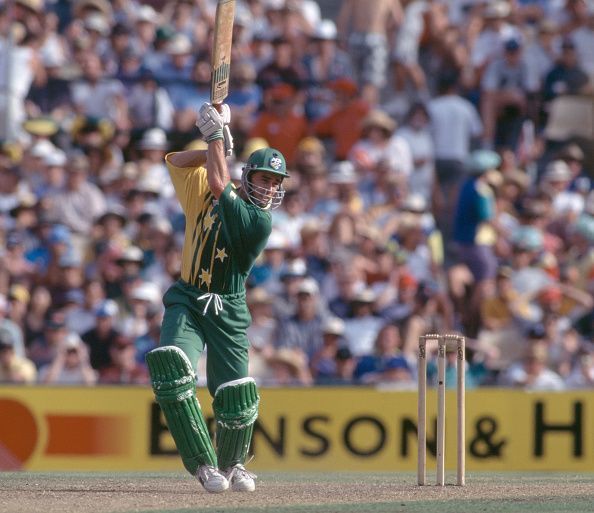

Both these cricketers fall under the category for the best ODI batsmen that Australia has produced. But that Bevan played in era that saw few of the best bowlers of the game and scored as many as he did should mean he is a better player ODI batsman.
Even after having played more games than Hussey, Bevan has a better average. It shows that he was more consistent of the two. Also, Bevan has scored six hundreds, whereas Hussey has only 3 centuries in 185 games.
Bevan has more number half-centuries of the two. However, Hussey has better a strike-rate. It can be attributed to the introduction of T20 cricket which added aggression to the stroke play. Therefore, Bevan takes this category.
3. In ODIs at home

It is quite obvious that quality batsmen will score more runs in home conditions. Here, both the batsmen have good numbers in home conditions. But, Hussey’s averages drops to 47, two less than his overall average of 48 whereas Bevan’s average rises to 55.86 from 53.58. You could say Bevan made the better use of familiar conditions.
It is a surprise that someone like Hussey has a highest score of 85 in 74 innings at home. But considering that Hussey too has 15 hundreds, it can be said that he was a good player to have in the side.
While both sets of numbers are good, if one would choose Bevan based on the impressive numbers he has.
4. In ODIs away from home

Things are very close in this department as compared to their record in home games. Both the players have played almost same number of games. Runs scored are pretty close too. And the highest score of both players is the same, 108.
Interestingly, despite scoring less runs than Hussey, Bevan averages one more than Hussey. That is because of the number of not outs he has. Even when he scored his highest score, Bevan has remained not out. That helps his average. Well, there is nothing wrong in trying to remain not out as long as you can win games for your country. And, once again Hussey shows better strike-rate. A strike-rate of 77 in ODIs was simply unacceptable in ODIs after the introduction of T20s.
Looking at the numbers, it is too close to call for a topper in this area and we could call it a tie.
5. While Batting 2nd in ODIs
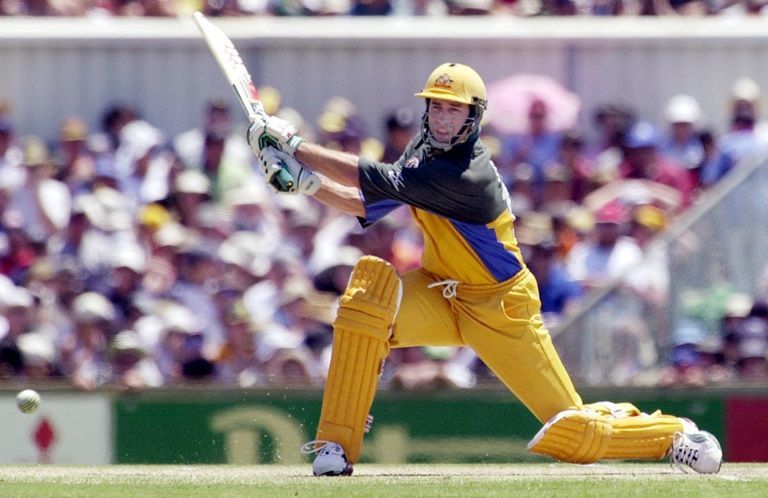

After looking at the table above there is no doubt that Bevan was better in chasing and finishing games.
He clearly takes the win in this section. Even after having played about 40 games more than Hussey, the legendary batsman averages way more than his counterpart.
The number of not-outs, centuries and half-centuries, and the total number of runs all favour the latter. Even the strike rate is not too far behind Hussey. We can see why Australia praised him so heavily when he was playing.
The reliable player was one of the major reasons why Australia ruled the ODI cricket for a long period. He was a master of batting with the tail-enders and getting the best out of them.
There have been very few players who were as good as him in chases, let alone Michael Hussey. So Bevan definitely bags this aspect of the comparison.
6. Performance in World Cups
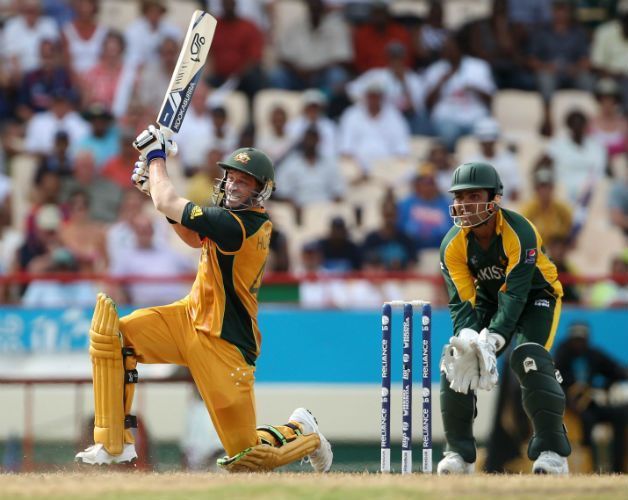

This is an interesting statistic. Hussey, the pillar of Australian batting during his days, has particularly impressive numbers compared to Bevan.
Playing in the biggest event of the game can be quite intimidating, but some handle it better than others. In this case Hussey is the winner of the two. And quite surprisingly, Bevan has a poor record.
While Bevan was part of only two World Cups (), Hussey played in three (). Though the strike-rate is on the lower side, you would be forced to think that Hussey was better purely because of his consistency.
7. Bowling records
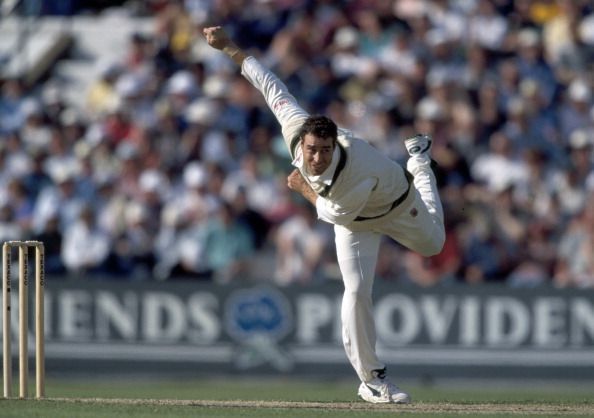

It was an advantage that both these superstars brought more the table than just their batting. They were not just great athletes in the field, but also decent bowlers, Bevan more so than Hussey. This all-round ability made them invaluable assets to the team.
Bevan, who bowled left-arm wrist spin, was more effective with the ball than Hussey, who bowled right-arm medium pace. Belonging to a breed of rare bowlers, Bevan has 65 wickets in total. He was very useful player in ODIs where he could slip in some quite overs in the middle of the innings.
Hussey, on the other hand, wasn’t renowned for his bowling abilities. He did trouble a few batsmen with his medium pacers and if the conditions suited him, he was capable of getting breakthroughs. But Bevan would be a better choice if you had to choose one among .
Looking at their performance in the above comparison in different formats and situations, it is very difficult to choose one over the other.
To some extent it is quite unfair as well, as they played most of their cricket in different eras. But both players were equally pivotal in Australia’s success and have left their impressions on the game along with some great memories.